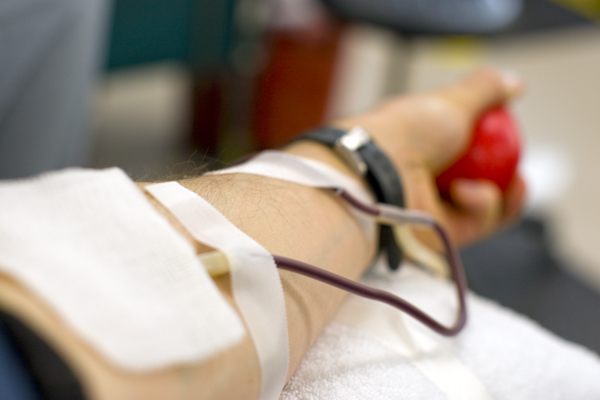Why do so few college students donate blood?
Some people find blood drives disgusting. The invasive questions they ask. The thought of sitting in the same place where some else had just given blood thirty minutes before. The possibility of fainting, vomiting, and dizziness. As if the free cookies and juice will make up for the fact that they have just taken a pint of blood out of your body. And of course, the needle.
Others welcome the blood drive. They see the invasive questions as fail safes for the recipients of the blood. The thought of sitting in the same place where some else had just given blood thirty minutes before fills them with hope for the number of people donating. The possibility of fainting, vomiting, and dizziness is a possible, yet overcome-able obstacle. And to think — the Red Cross offers free cookies!
According to the Red Cross website, the two most commonly cited reasons for not donating blood are “I don’t like needles” and “I’ve never thought about it.”
At Haverford, “I’ve never thought about it” doesn’t come into the question. For weeks leading up to the blood drive, signs plaster the dining center, the doors to dorms, and the bathroom stalls. Emails are sent out in order to make appointments in advance. And on the day of the blood drive, chalk messages and signs are posted all around campus giving directions to Founder’s Hall, where the blood drive takes place.
About 38% of the population is eligible to donate blood, however only less than 10% actually donate, according to the Red Cross. At a school of 1,198 students, only 152 students made appointments for blood donation. College-aged adults are often cited as the healthiest adults. They are also known for being the most outspoken and most community-service driven of adults. Yet, 12.6% of the student body signed up to donate blood.
The donation process has three steps. First, one must complete an oral medical history. Then, the donor has a mini-physical — in which his/her temperature, blood pressure, iron level, and pulse is taken. Lastly, the donor donates.
At Haverford 152 people signed up to donate. Only 137 of those students showed up to their appointment. And a mere 103 people donated, giving Haverford college an 8.5% donation participation, as 34 people getting turned away to donate.
Students get turned away from donating for many reasons.
As Sadie Resnick, 19, says, “For my height [5’ 1’’], you have to be legally obese to make the weight requirement.”
Another of the requirements for Red Cross is that an individual cannot have travelled internationally. This poses a huge problem for college-aged students, especially in the age of study abroad. Any senior who had studied abroad as a junior is ineligible to give blood.
Another problem posed to Haverford students, in particular, is the number of students involved in sports. As 37% of Haverford’s students play a varsity sport and many more participate in club sports, many can’t donate because of fear of missing practices and games. The Red Cross suggests waiting 24 hours until an intense workout after donating blood.
There are also horror stories that get whispered around campus. Students hear of donators vomiting and passing out either at the donation center or later in the day. Last year, an ambulance was called to the blood drive, and the reason was never explained.
And of course, there is always “I don’t like needles.” Emily Ozer, 20, says, “I feel bad that I don’t donate. Both my mom and my boyfriend are huge supporters, but the needles freak me out too much.”
However, there is a small faction of Haverford students who donate frequently.
Many Haverford students donate for the first time either in high school or freshman year of college. Those who don’t get turned away for medical reasons donate at least twice yearly, when the Red Cross comes to Haverford.
Haverford’s attitude towards blood donation reflect American’s attitudes, in general, toward the blood donation process. As 15.7 million blood donations happen annually but there are only 9.2 million blood donators. Most donators donate more than once a year.
Most donators at Haverford, like most donators, are not first time donators. According to the Red Cross Website 31% of donors are first time donors and 50% are ‘regular, loyal donators.’
There is the same small faction who help out with the blood donations.
“We have a strong group of students who regularly table and volunteer….[but] it’s often the same small group of students completing the major of the work,” Minna Yoshikawa, Blood Drive Co-Coordinator, says, “Because of this difficulty we often have Red Cross volunteers in place of student volunteers at the drive even though many college campuses rely on only student help.”
But as Michael Moraskie, 19, explains, “Of course [I’m donating]. I donate every year.”

